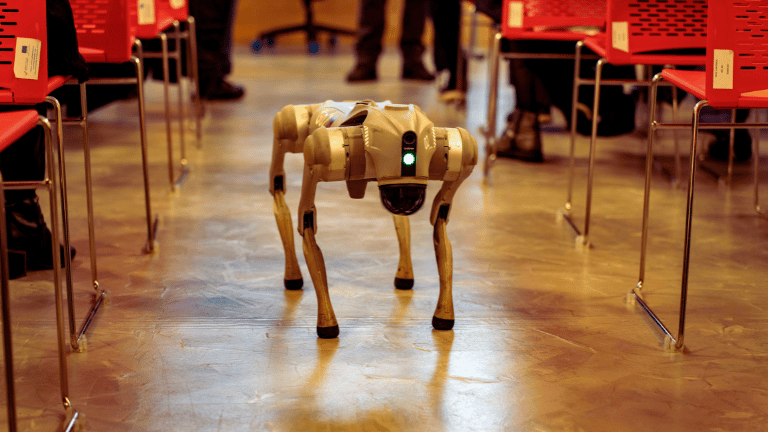Application
Matrix-style FSRs can help robotic dogs feel the ground beneath their feet. This post explores how pressure sensing supports balance and adaptive movement.


Giving Robotic Dogs a Sense of Touch: Matrix Sensors for Foot Pressure Feedback
In our previous article, Enhancing Humanoid Robotics with Force Sensing Resistors, we discussed how force sensing resistors (FSRs) help robots become more responsive — especially in how they grip, stand, or adjust posture.
But tactile sensing isn’t just for hands or humanoid forms.
For robots that walk — like quadrupeds or animal-like platforms — the ability to sense pressure under their feet plays an equally important role. Whether climbing, balancing, or navigating uneven ground, these systems need to understand how each step interacts with the surface. One way to support that is through matrix-style pressure sensors, which provide a map of pressure across the foot in real time.
Why Pressure Mapping Matters
Most walking robots rely on motion sensors like IMUs (inertial measurement units) to help with balance. These sensors work well for tracking position and movement, but they don’t tell the full story — especially on rough or unpredictable terrain.
Pressure sensors add an extra layer of feedback. They help the robot understand how force is applied at the ground — whether the foot is fully supported, slipping, or touching down unevenly.
With matrix-style FSRs, the robot can see more than just total force. It can detect where the pressure is applied: at the toe, heel, edge, or center. This helps with:
- Balancing better on slopes or uneven surfaces
- Adjusting weight during walking or climbing
- Detecting early signs of slipping or poor contact
This kind of sensing doesn't replace existing systems — it works alongside them, making the robot more aware of its contact with the ground.
How Matrix Sensors Work in Robotic Feet
Matrix pressure sensors are built using rows and columns of sensing material. At each intersection point — called a node — the resistance changes depending on how much pressure is applied. This allows the sensor to detect different levels of force at different points on the surface.
In robotic feet, the matrix sensor is usually placed under a soft layer, like silicone, which helps spread out the pressure and protect the sensor. The system scans the matrix many times per second, creating a live “heat map” of pressure across the foot.
From there, the robot’s software can use this data to:
- Stay balanced when standing still
- Adjust each step based on surface contact
- Learn and adapt movement patterns over time
This setup is compact and flexible, which makes it easier to add to different foot designs.
How Developers Are Using This Approach
In research labs and hobby projects, matrix foot sensors are already being used to improve movement control. Some developers use them to study how a robot shifts weight during motion. Others combine them with learning algorithms to create smarter walking behaviors that react to the environment.
These sensors are especially helpful in conditions where cameras or vision systems may struggle — such as low light, dusty ground, or cluttered areas. The pressure data gives the robot a direct sense of how it’s standing or stepping, without relying only on what it sees.
Touch as Part of Motion
As robotics continues to move from controlled labs into everyday environments, touch feedback — including at the feet — becomes more important. Matrix pressure sensors offer a simple but powerful way to improve that feedback, especially for robots that walk, balance, or explore unknown ground.
Instead of relying only on code and models, these sensors help the robot respond to real-world contact in real time. That leads to more stable movement, better recovery from slips, and a more natural connection with the environment.
We see this as an exciting area of exploration. Whether you’re building a robotic dog, testing new footpad ideas, or working on balance control, matrix sensing might be a useful tool to try.
Latest Insights
Collaboration Begins Here.


